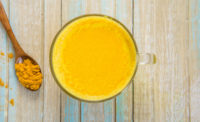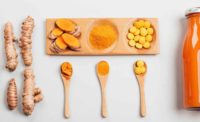Curcumin's Bioavailability
A study examines the bioavailability of curcumin across three different oral delivery systems.

Recognized as the most biologically active compound found in the turmeric rhizome (Curcuma longa), curcumin presents wide-ranging health benefits. Key to capitalizing on curcumin’s health benefits is improving its limited uptake into the body. The typically low systemic bioavailability of the lipophilic curcumin is attributed to its poor solubility in the aqueous phase of the digestive tract and its rapid metabolism and excretion from the body.
Over the past several years, new delivery systems have emerged and were touted for their potential to enhance uptake and retention. The study, “Oral bioavailability of curcumin from micronized powder and liquid micelles is significantly increased in healthy humans and differs between sexes,” provides strong data demonstrating enhanced systemic uptake and sustained circulation of curcumin micelles in comparison to both native curcumin and curcumin micronisate.
“The numbers are exciting,” explains Jan Frank, PhD, professor at Hohenheim University’s Institute of Biological Chemistry and Nutrition, Stuttgart, Germany, and the principal investigator on the recently published human trial. “The AUC-[the area under the plasma concentration-time curve, which is the gold-standard measurement of the bioavailability of a compound] places the curcumin micelle head and shoulders above other delivery systems. This provides significant opportunities to truly utilize curcumin’s properties to maximum effect. ”
Based on comparisons of plasma AUC, the study demonstrates significant differences between the three curcumin formulations with total AUC as follows: native curcumin 66 +/- 116 nmol/L×h, curcumin micronisate 583 +/- 289 nmol/L×h, and curcumin micelle 12148 +/- 4547 nmol/L×h. The numbers show a 185-fold higher AUC, demonstrating conclusively the superior bioavailability of the curcumin micelle compared to native curcumin.
Looking for a reprint of this article?
From high-res PDFs to custom plaques, order your copy today!





